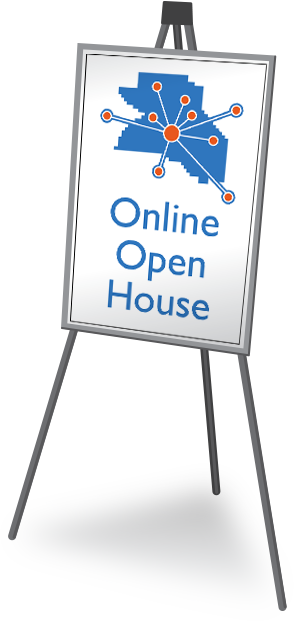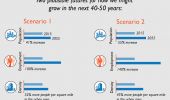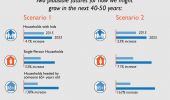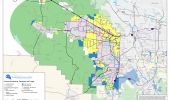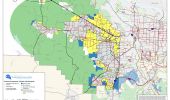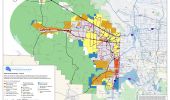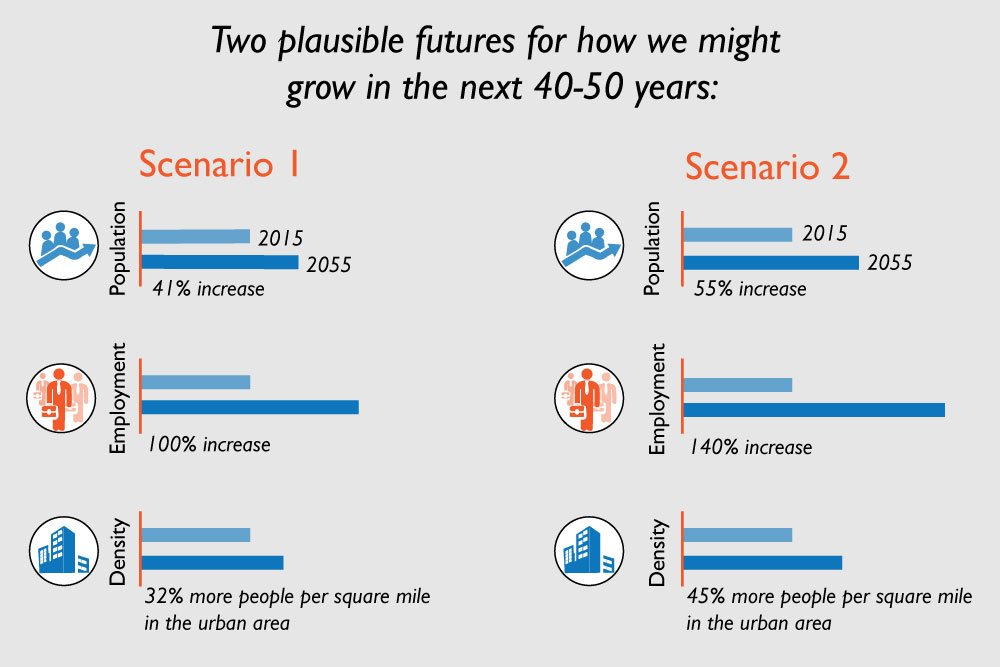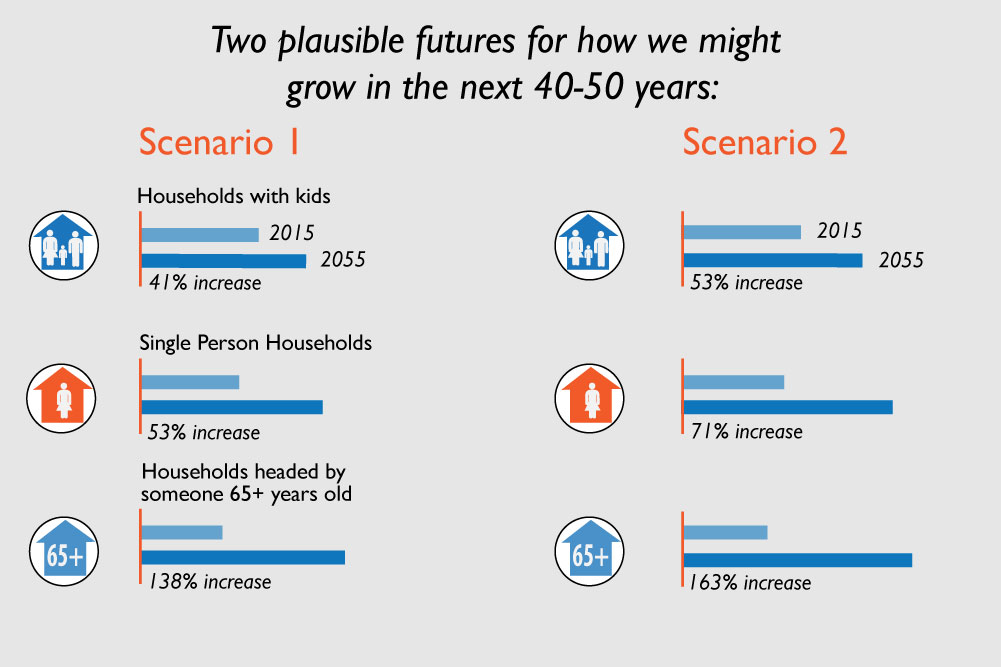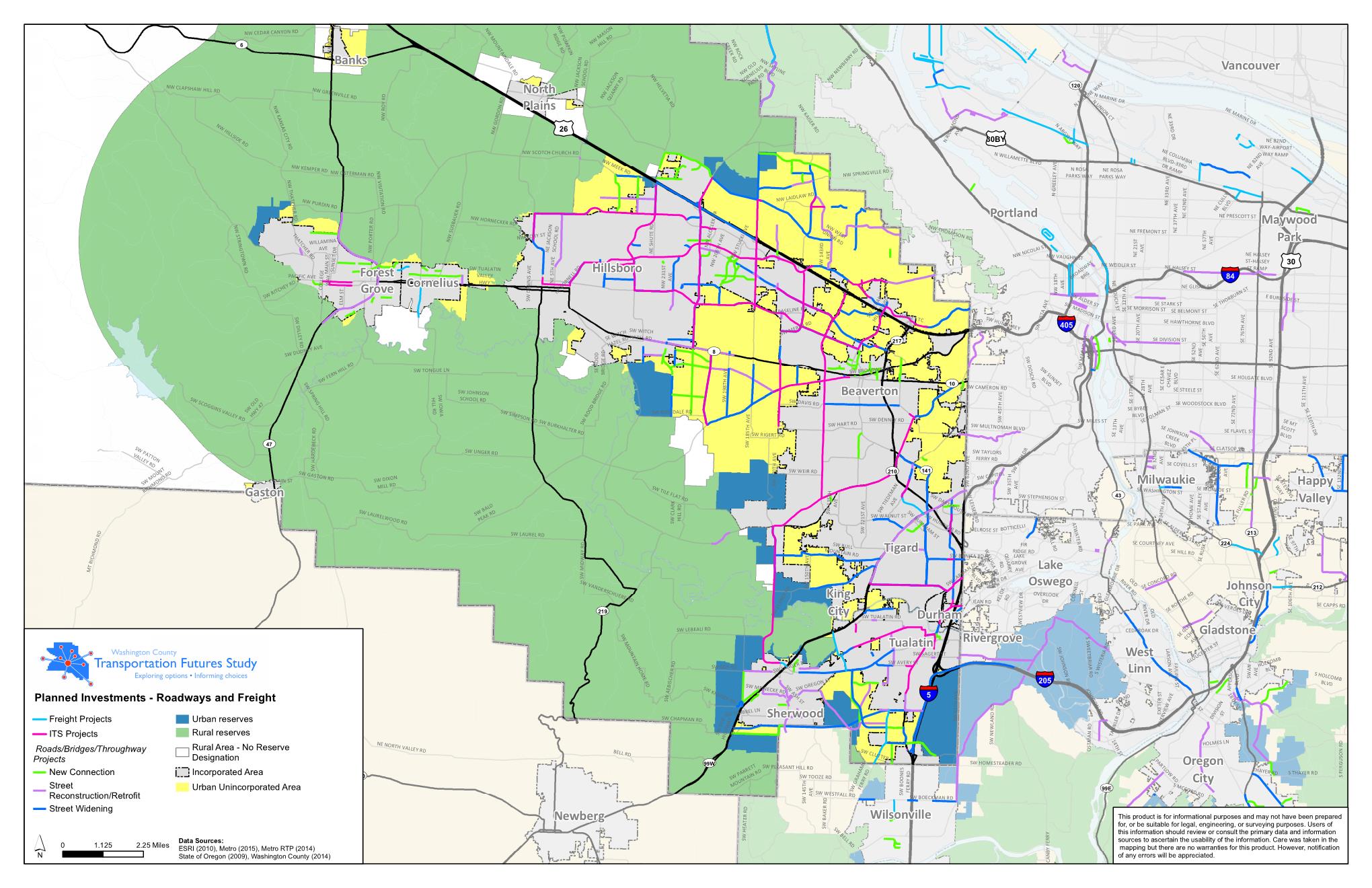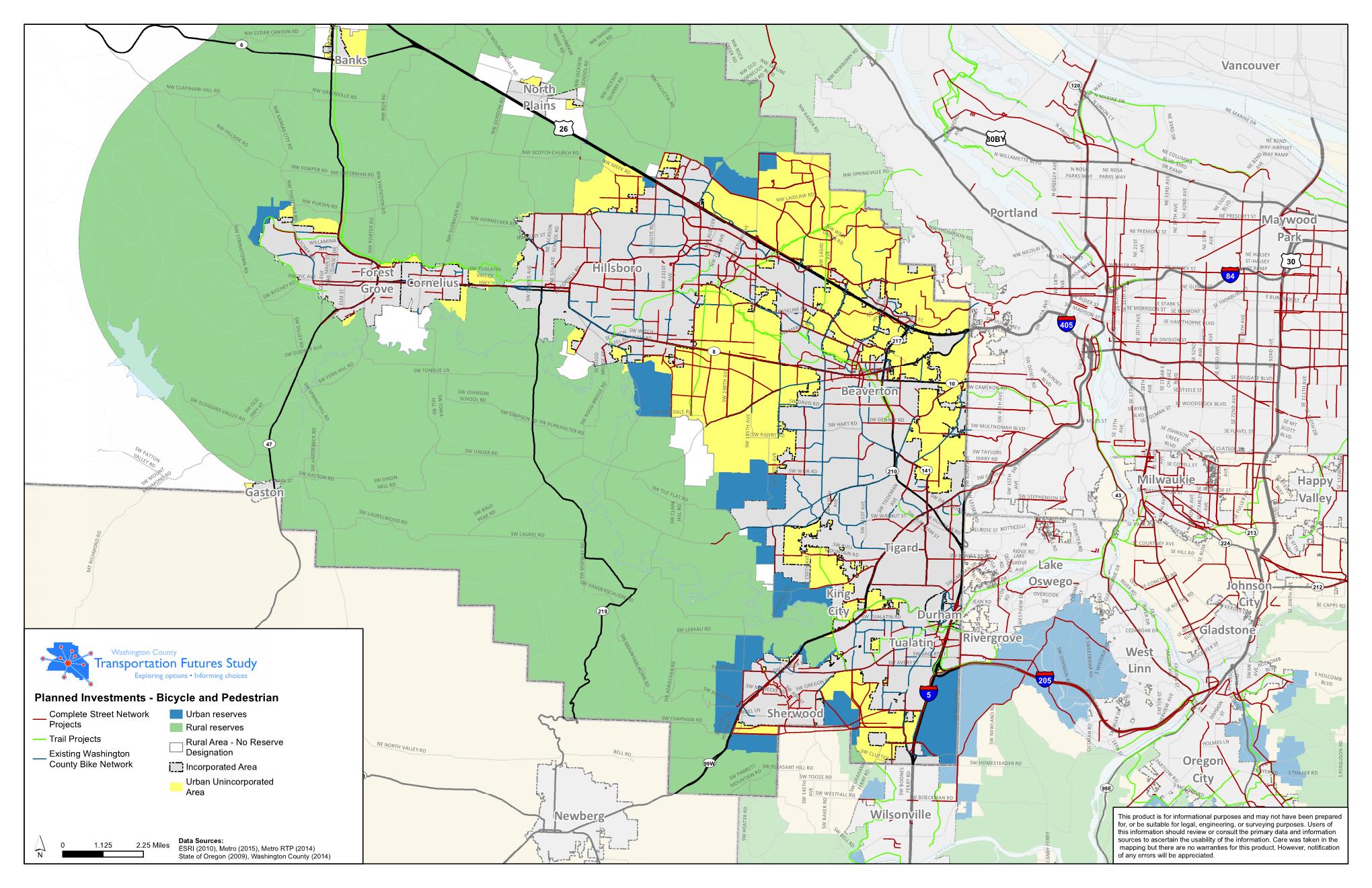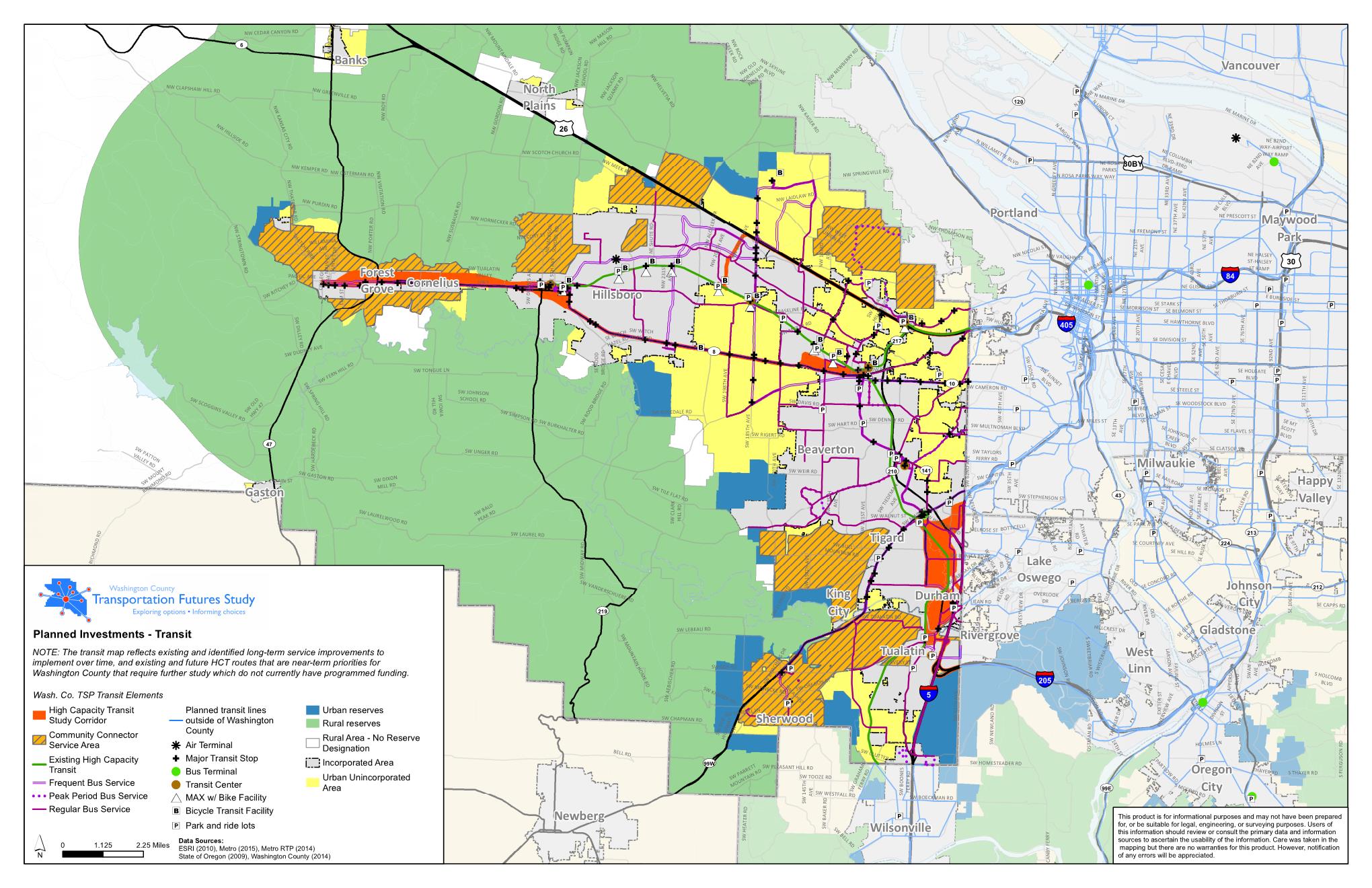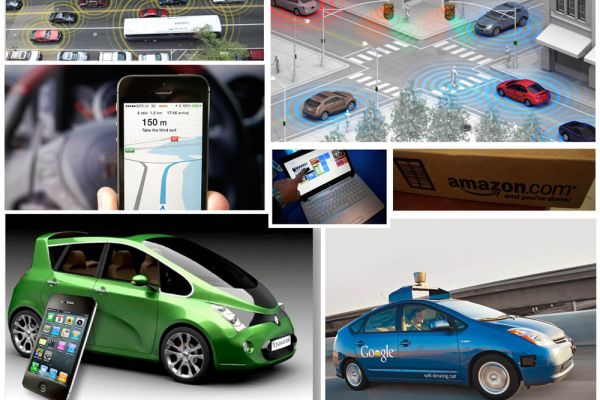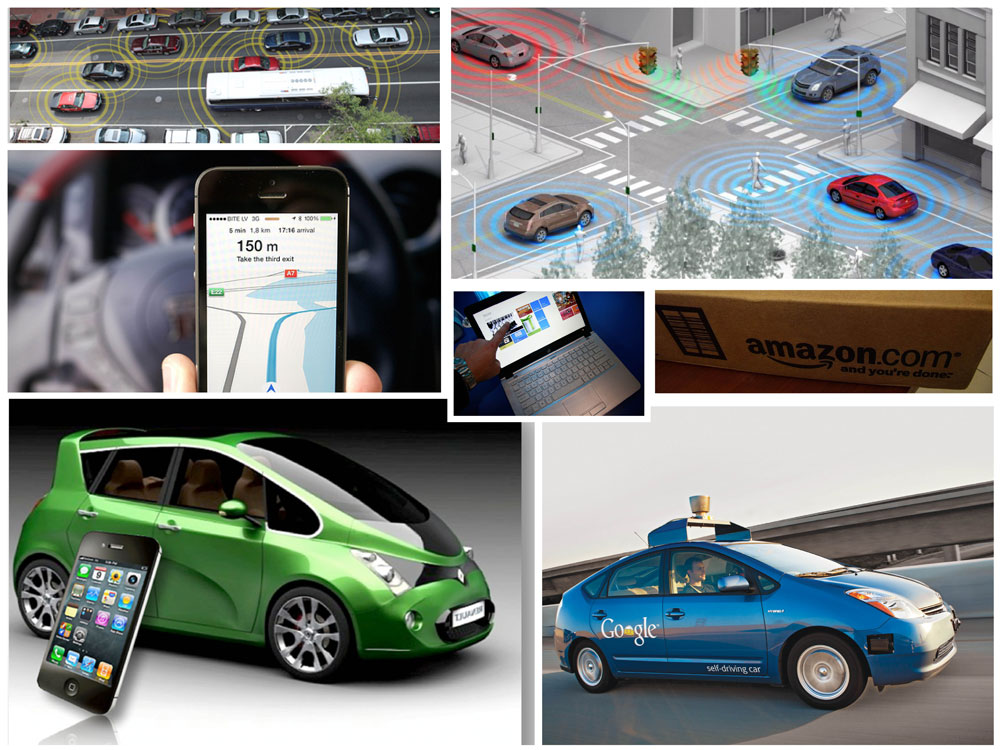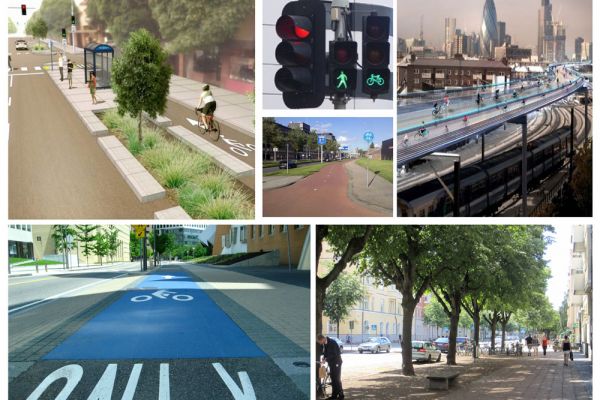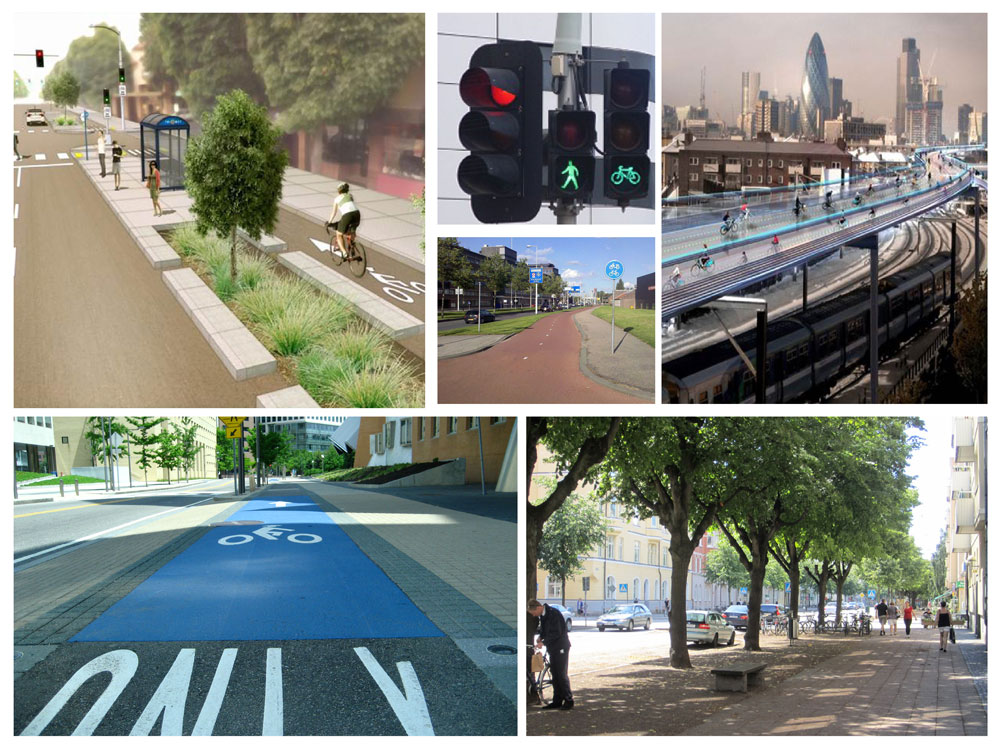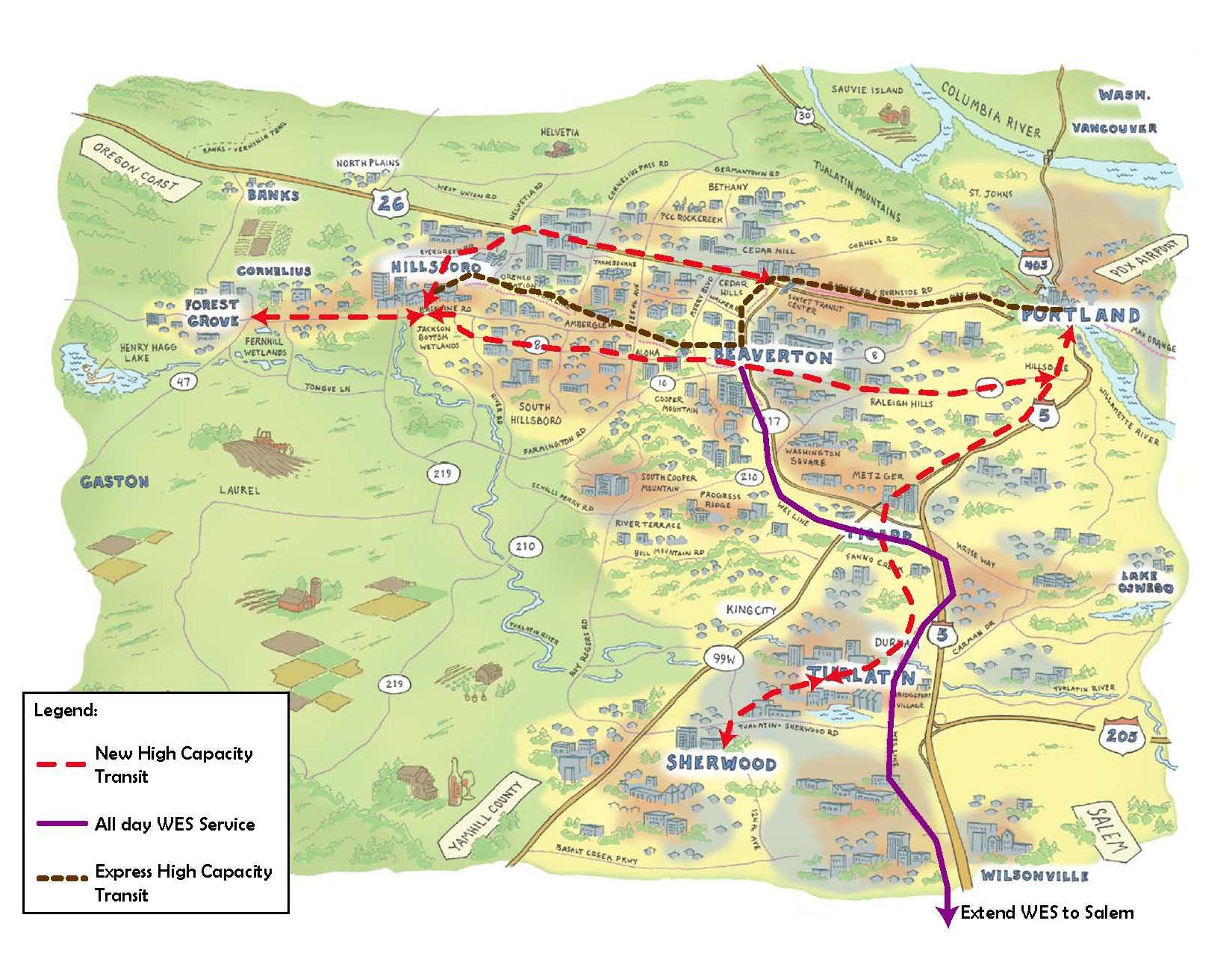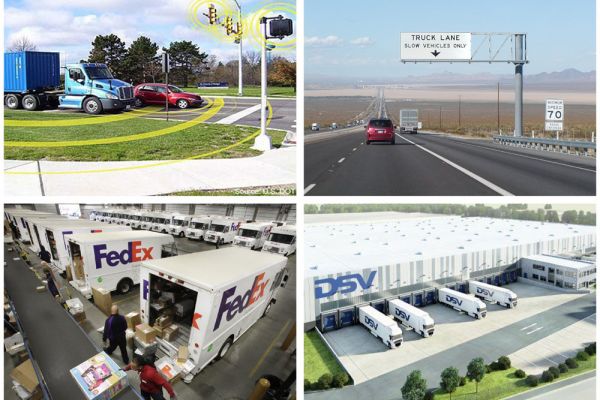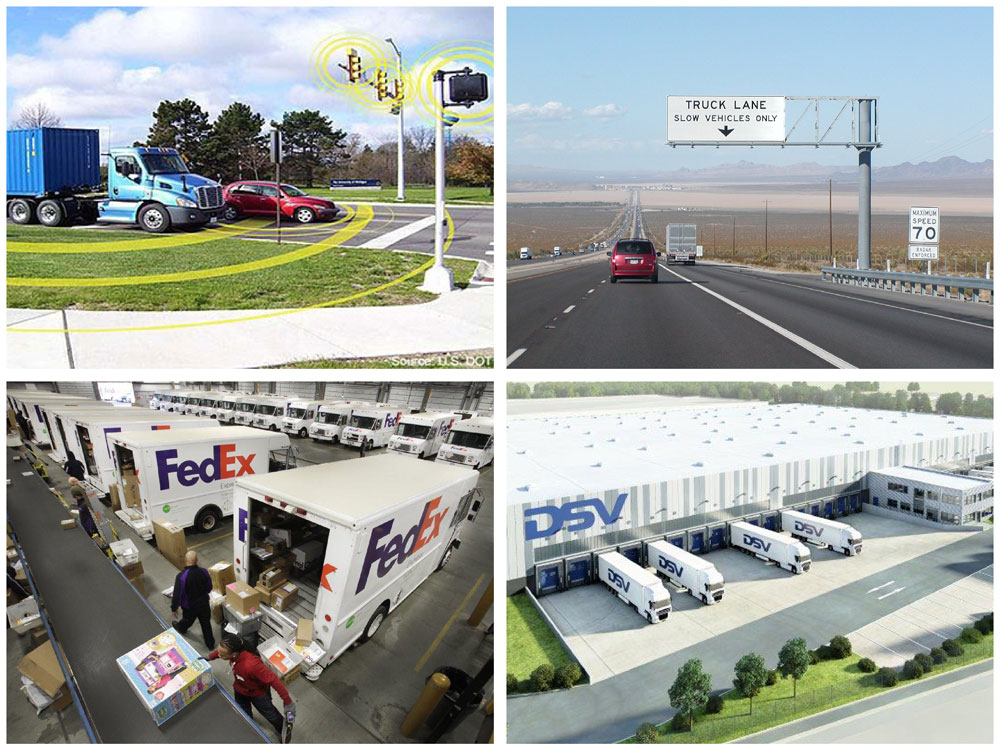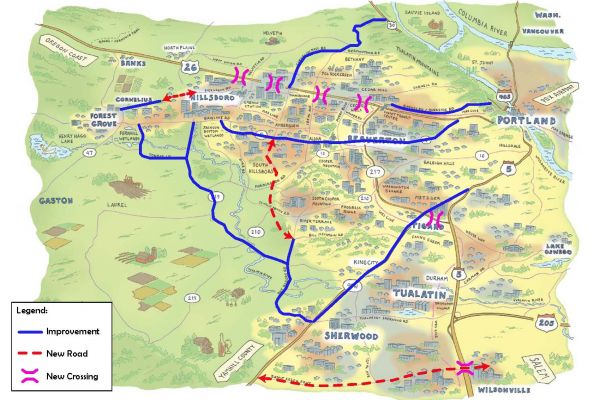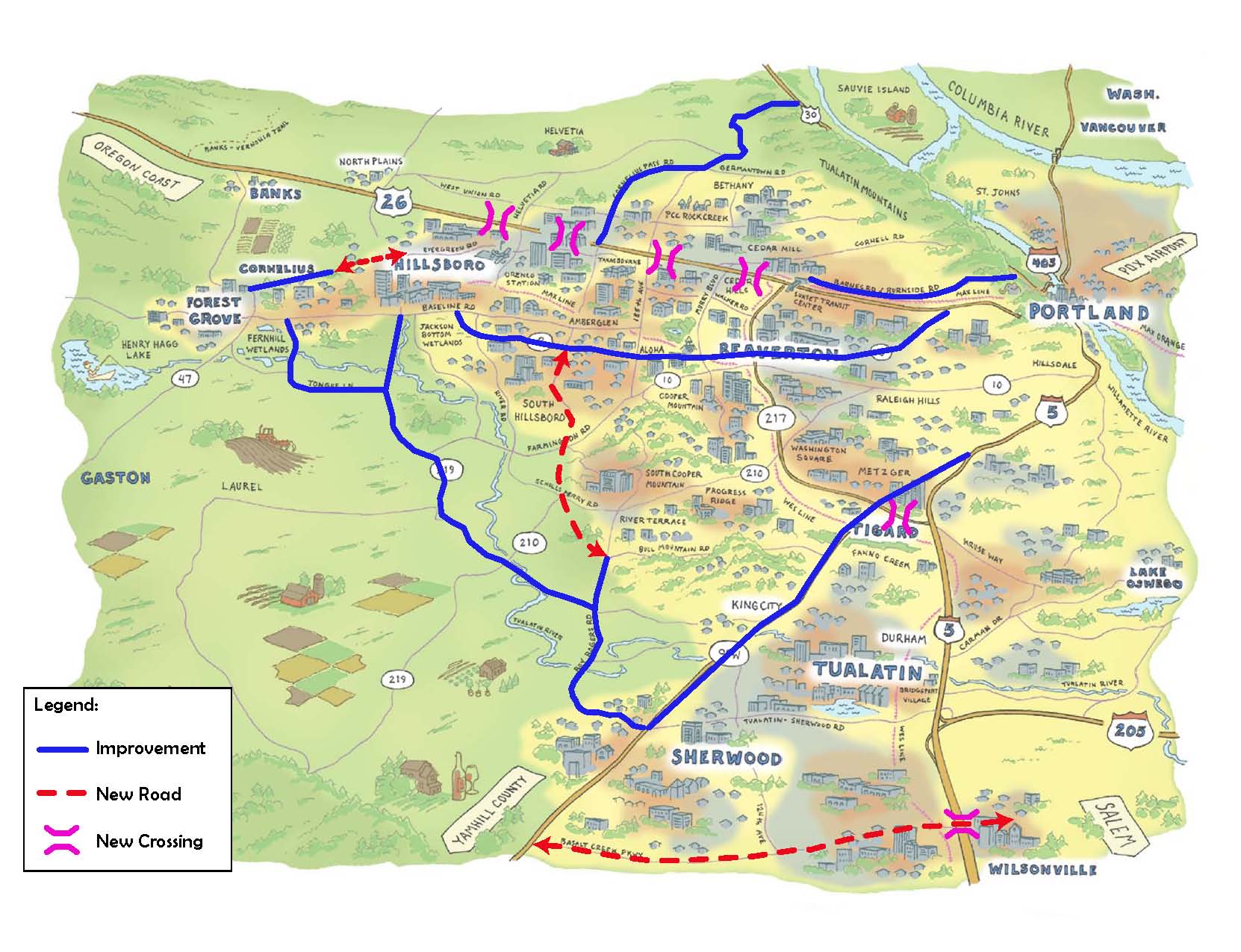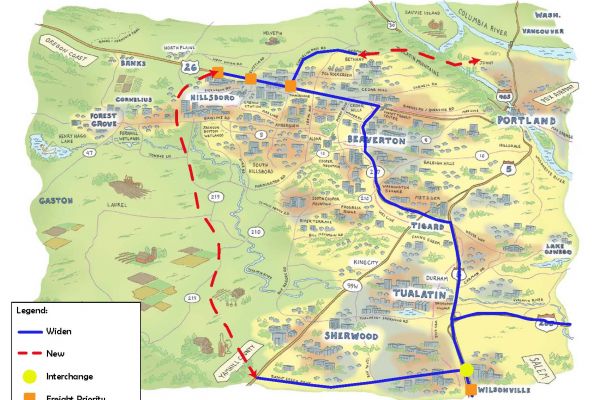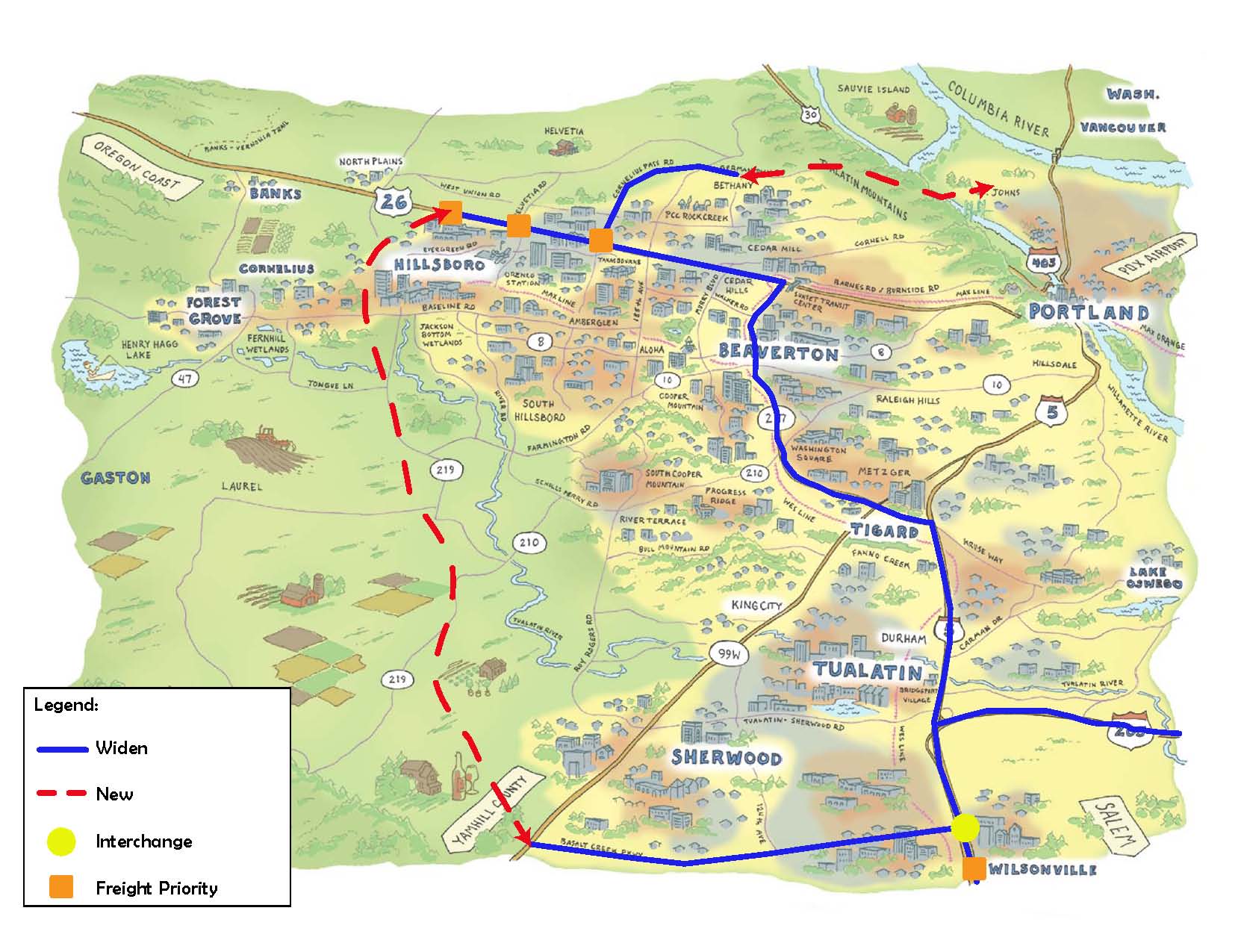Where do you want to go?
Historically the County has experienced a strong economy, community growth, and a wonderful quality of life. This is in part due to significant investments in our transportation system. During the next 40 to 50 years the County will become more urban, and our population and number of jobs will grow dramatically—which will place additional demands on our transportation system. Thinking about how to set up our transportation system for long-term success is no easy feat. We want your input to help us think about:
What kind of transportation investments would enhance our economic health and quality of life for generations to come?
Your input in this online open house will help shape a list of potential transportation investments and ideas to study. The County will then evaluate how well the investments and ideas meet anticipated future transportation needs and support community values. The evaluation will highlight costs, effectiveness, and other tradeoffs to help policymakers set transportation priorities and identify further evaluation and refinement needs.
Study Schedule
During the next 40 to 50 years, The County and its cities will continue to grow and change as the number of people and jobs increase. To imagine what the County might look like in 40-50 years, the Study Team assumed development consistent with adopted community plans and policies, and gathered input from experts about future trends and technologies and potential shifts in demographics, economics, land use, and travel behavior. Watch the video below and then tell us how you think we might change over the next half century.
- Read more about how we’re likely to grow in the Emerging Trends and Future Conditions Report (pdf, 620kb).
How do you imagine Washington County in 40 to 50 years?
How do you think people will get around in the coming decades? What technological, social, or other trends will change the way we travel?
characters remaining.
Read other comments...
Click on the tabs below to learn about potential transportation investments that could improve the way we get around. Use the questions at the bottom of each page to tell us whether we have captured the most important ideas to study and to give us other ideas.
Read the Draft Transportation Investment Options Report for more information.
Reducing Vehicle Trips
The Study will look at strategies to reduce vehicle trips, including:
- New mixed-use areas with parking management (i.e., paid parking and limited parking hours areas)
- Employer sponsored transit incentives
- Increased car, bike, and ride-sharing programs
- Implement a road-user charge based on how many miles a person drives (as an alternative to the gas tax)
- Turn some freeway lanes into toll-ways and/or “managed lanes” where drivers pay a charge to use a lane
- Integrated mobility, real-time information, and mobility hubs
- Increased telecommuting
Emerging Technologies
The Study will look at potential impacts of emerging technologies, including:
- More electric vehicles—including electric cars, bicycles, and freight trucks
- Electric vehicle charging stations
- Driverless vehicles, i.e., “self-driving cars”
- Interconnected traffic signals
- Smartphone technologies that help people plan routes, share rides, and share cars and bicycles
- Increased online shopping
Biking and Walking
The Study will look at ways to improve bicycling and walking, including:
- Install protected bicycle and pedestrian facilities on all collectors and arterials accessing major mixed-use and employment centers.
- Install separated bicycle express routes accessing major mixed use and employment centers.
- Increased bike and pedestrian connectivity in mixed-use areas
- Pedestrian and bicycle signal priorities and amenities such as bike parking
- Reduce travel speeds of arterials through downtowns and town centers to improve safety.
Transit
The Study will look at ways to improve travel by transit, including:
- More bus routes and connector shuttles to serve residential and employment areas
- Communications upgrades and adaptive signals in key corridors countywide that provide for transit priority
- Upgrade WES to all-day service, and extend WES to Salem
- Extend high capacity transit to Forest Grove and Sherwood
- Add Bus Rapid Transit on TV Hwy and Beaverton-Hillsdale Hwy
- Amber Glen/Evergreen streetcar to connect employment and residential areas
- Express MAX service to downtown Portland and Portland Airport (Blue and Red lines)
- Improved bus service coordination with transit providers in adjacent counties
- Dedicated transit lanes on throughways to support express transit services
- More park and rides
Freight (Trucks)
The Study will look at ways to improve movement of goods by truck, including:
- Expand capacity on major roads as an alternative to freeway travel.
- Improve arterial roadways to better accommodate trucks.
- Construct freight ramp meter bypass lanes at key locations.
- Expand capacity on throughways and give priority to freight.
- Dedicate truck lanes on US 26, I-5, and new north-south limited access roadway with dedicated on-ramps at key locations.
- Develop new freight consolidation facilities that improve access for Washington County goods
Major Roads
The Study will look at ways to improve travel on our major roads, including:
- Widen Cornelius Pass Road between Hwy 26 and US 30
- Connect and widen arterials parallel to I-5 and Hwy 26 and upgrade with new transit and protected bicycle and pedestrian facilities
- Connect and improve existing rural roads with passing lanes for trucks and bikes for travel between Hillsboro, Forest Grove, and Sherwood
- Add arterial crossings of Hwy 26 and I-5
- Add new arterial between Forest Grove and Hillsboro and between 99W and I-5
- Improve access management along key section of TV Hwy and 99W
- Redesign selected major intersections as roundabouts or grade-separated
Throughways
The Study will look at ways to improve travel on throughways, including:
- Construct new limited access road between Hillsboro, Sherwood and I-5/I-205
- Add new interchange in/near Wilsonville to access I-5 and I-205
- Widen Hwy 217
- Widen Hwy 26 from Brookwood Pkwy to OR 217
- Widen I-5 from Hwy 217 past Wilsonville,
- Widen I-205 between I-5 and Oregon City
- Prioritize new capacity for transit and freight
- Dedicated truck on-ramps at key locations
- Build a new connection to Hwy 30 and Columbia Blvd from Germantown and Kaiser Roads via a new road (at grade or tunnel) and a new bridge across the Willamette
Next Steps in the Study Process
- February 2016: Refine and finalize the transportation investment packages based on public input.
- Winter/Spring 2016: Evaluate the investment packages using measures that reflect multiple community values.
In early 2015, the Study team engaged the public in a conversation to figure out what it is they need to attain a good quality of life in Washington County. This robust public effort laid the groundwork for developing a set of community values. Now, the Study team is developing a set of questions based on these values, which will be used during the evaluation to help assess trade-offs between the various transportation investment options. At the end of the technical evaluation, we’ll be able to see how well the transportation investment packages address the community values.
- Fall 2016: Public conversation on tradeoffs and conclusions.
Stay Involved
- Sign up for our mailing list below to receive study updates.
- Provide comments anytime on the project website: WCTransportationFutures.org.
Final Questions
Mailing list (Optional)
Provide the following optional contact information if you would like to be added to the project mailing list.
Demographic Information (Optional)
This study is requesting demographic information to evaluate the effectiveness of public outreach activities. The identity of individuals is kept confidential. The results are reported as totals only, and used solely to help improve future community engagement. Providing this information is voluntary and optional.

